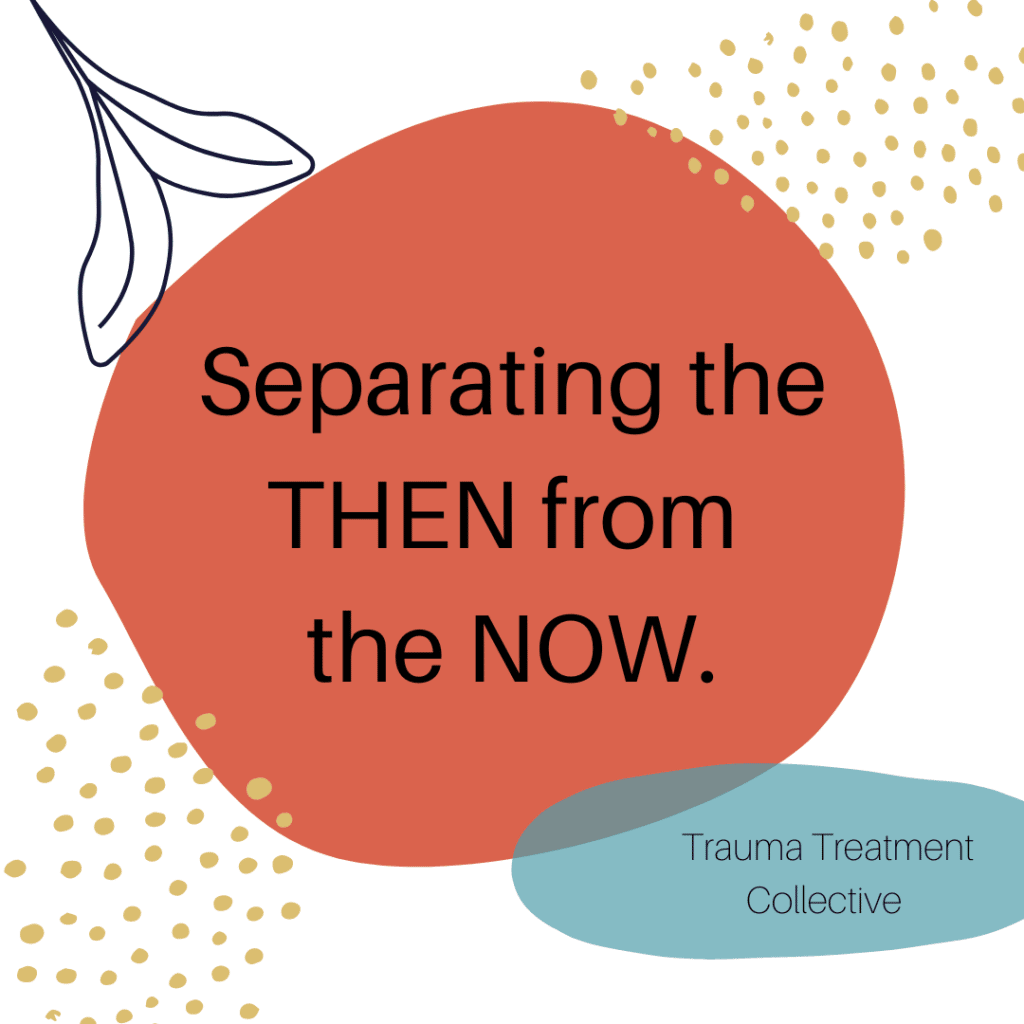Working with trauma can be complex, intense, draining, energizing, rewarding, and invigorating all at the same time. It is hard work, but it is so rewarding to see clients move out of the grips of their past into the expansion of their present and future. One thing that makes trauma treatment so intense is the connection between our past and our present. It is easy for clients to lose connection to their present and slip into their past.

We spend a great deal of time helping clients develop the skills needed to explore their past while staying in their present. You might have heard the phrase, “separating the then from the now”. It is a very common phrase used in trauma treatment circles, and it can be helpful to clients who don’t register the difference between “then” and “now.”
It is impossible to talk about retraumatization without honoring the power of the space between then and now. It is my belief that safety for a client exists in that space. In the simplest way possible to explain retraumatization, it is the loss or non-existence of that space: a client’s then becomes their now.
A more formal definition of retraumatization is when a client re-experiences or relives their traumatic experience.
Some signs and symptoms of retraumatization might be:
- Intrusive thoughts
- Nightmares
- Hypervigilance
- Sensitivity to Triggers
- Isolation
- Suicidal Ideation/Attempts
- Panic Attacks
- Engagement in Substance Abuse/Use
- Increase in maladaptive behaviors

Some reasons clients might experience an episode of retraumatization is:
- Stressful periods in life
- Exposure to a scene on TV or in a movie or lyrics in a song
- Natural Disaster
- Exposure to sensations, sounds, smells, etc. that are similar to traumatic experience
- Sickness, Injuries, hospitalizations, medical procedures
- Loss of a loved one, pet, material possession, etc.
- Unhealthy relationships
It is imperative that we help clients avoid episodes of retraumatization. It is not helpful to their healing journey and in some cases, it can cause psychotic symptoms. One major way to avoid retraumatization is to understand what the symptoms are that might accompany it and what some possible situations are that you can help your client prepare for in hopes of buffering their system from the experience all together.

